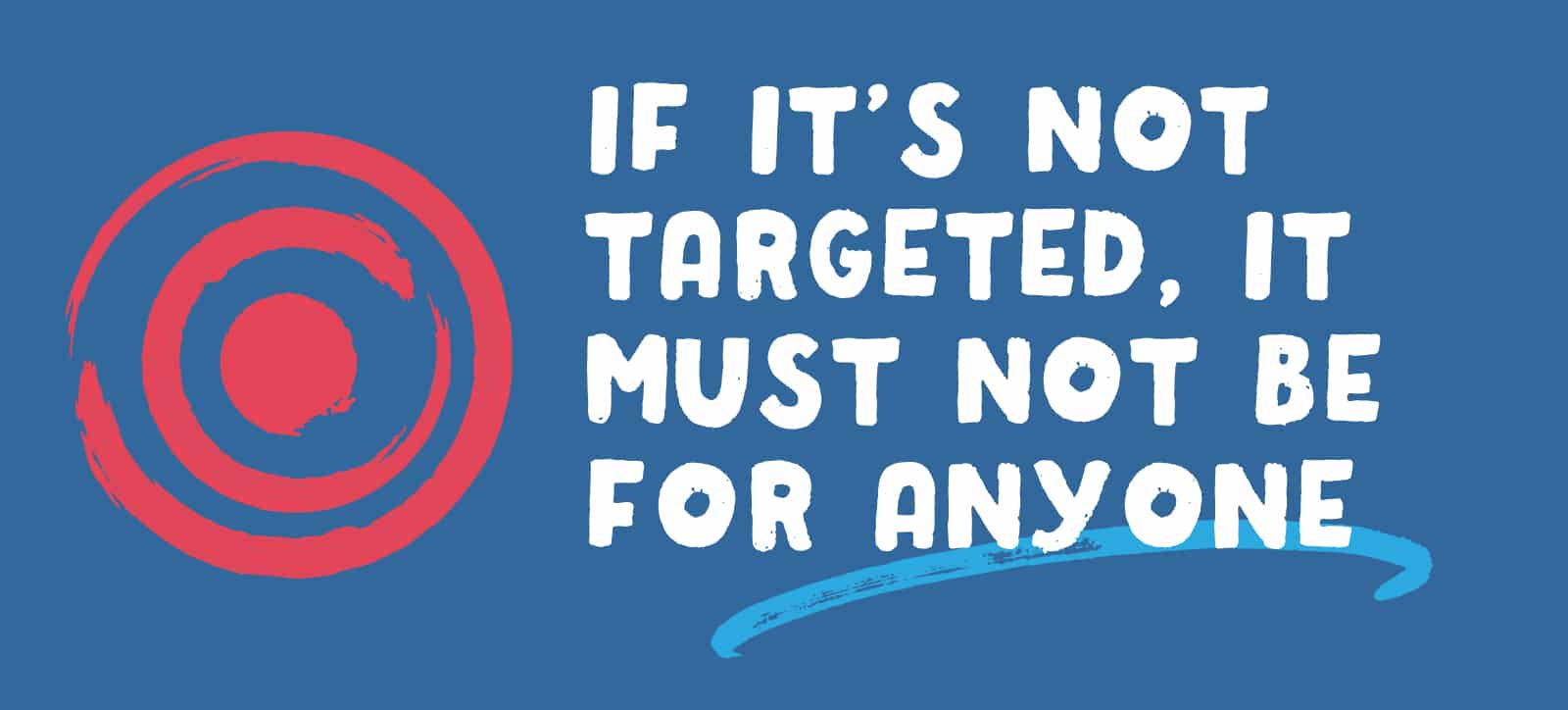If it’s Not Targeted, it Must Not be for Anyone

A well-executed targeting campaign can remind consumers of products they viewed but didn’t purchase and introduce them to similar items they may not have known existed. As great as this sounds, it requires much attention and thorough vetting, as with any type of marketing tool.
Targeting is an effective way to reach your target demographics or potential customers, but reaching them is only half the battle. If your targeting ads display items the consumer would never have any intention of buying, at best-case wasting your marketing dollars. Worst-case, you just completely turned off a potential customer. At a basic level, consider these targets before placing ads:
Age:
Casting a wide net seems like the best option, until you blow through your budget by serving up ads for your new skateboard company to AARP members. Know your products’ demographics, then set different age parameters.
Gender:
I bought my girlfriend a dress and for the next month, I was served ads for women’s clothing. I’m a male. Now, I have no interest in buying her clothes from this brand. Worse, they wasted their marketing dollars serving me ads.
Market Life Cycle:
Brands love early adopters. But the truth is, the majority of people wait for products to break the mainstream. Ads for your brand’s latest technological adaptation will only appeal to a small slice of your audience. Hit the early adopters with precision, while continuing to promote traditional products to your broader target market. Otherwise, you’ll be paying for ad space that people will ignore or disdain.